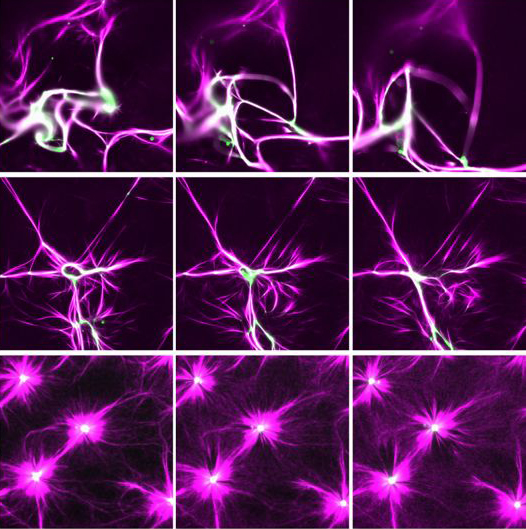by Niyati Vachharajani

Microtubule organization is essential for various biological processes ranging from cell division to intracellular transport. Microtubules are polymers of tubulin protein that assemble into two basic cellular architectures: bundles and asters. In contrast to bundle formation, the molecular mechanisms underlying aster formation are poorly understood.
Marija Zanic, PhD, Ryoma Ohi, PhD, and their colleagues investigated a microtubule-associated molecular motor protein HSET/KIFC1(human kinesin-14) that is involved in forming both bundles and asters. They showed that HSET molecules form clusters with soluble tubulin, which trigger directed long-range motility of HSET on microtubules, essential for promoting aster formation.
Based on these observations, they propose that the HSET activity is dependent on the relative availability of soluble versus polymeric tubulin and therefore, ultimately on the ongoing cytoskeletal rearrangement during cell division.
This study,published in Nature Communications, sheds light on the interaction between tubulin and HSET and how motor regulation at the molecular level contributes to the organization of morphologically distinct higher-order microtubule architectures.
This research was supported in part by National Institutes of Health grant GM066610.












